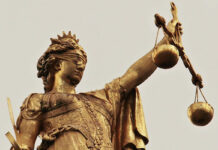COVID policy on background music is highly prescriptive

By Jack Cummins
THERE’S precious little good news around for the trade, but the reopening of music venues in level one and two areas has allowed a further easing of the so-called ‘music ban’ in hospitality premises permitted to serve alcohol indoors.
That ban didn’t appear in regulations. Instead, it originated in statutory guidance back in August last year, effectively prohibiting all background sound, including music and audio from television sets.
The ‘science’ suggested that the aerosol transmission of COVID-19 was likely to be precipitated by customers raising their voices to be heard above the background noise.
On the other hand, there appeared to be a comparable risk that, sitting in deafening silence, customers would lean in to have conversations that couldn’t be heard by others.
Following work carried out by an expert group set up by the Scottish Government, the easing of restrictions began in December when the guidance was updated to allow the introduction of low-level background music and sound provided that a number of precautionary measures were taken.
Essentially, background audio should not interfere with comfortable conversation, when customers are sitting at a table and observing the necessary physical distancing requirements.
Jukebox music is also permitted where the volume level is controlled by management and enhanced hygiene measures are deployed after each use.
Now, in level one and two areas there’s a further step forward with the guidance giving the green light to live background music in addition to recorded or broadcast background sound.
That relaxation comes with a number of caveats in hospitality settings operating with one-metre physical distancing.
Music must only be provided for ambient background effect; it shouldn’t be promoted as an event; it mustn’t interfere with speech intelligibility; and customers should remain in their seats. Importantly, where performers are singing, Perspex screens should separate them from customers.
There’s no question of any forms of entertainment involving ‘sing-alongs’ or dancing, such as discos, silent discos and karaoke.
Bear in mind too that a premises licence requires to authorise a number of relevant operating plan “activities”: recorded music, live performances and televised sport. It’s likely that local licence conditions will prevent music being played in outdoor areas.
I’ve been asked on a number of occasions whether level one and two businesses can go a stage further and stage proper live events as distinct from background entertainment. For those with the space the answer is yes.
A requirement to operate two-metre physical distancing would apply with overall capacity limits; and events must be organised in a way that complies with guidance for the events and performing arts sectors – separate from the tourism and hospitality guidance.
This strikes me as a very demanding exercise and it could well be a struggle to make these events viable.
I urge any operator proposing to go down this route to engage with the local environmental health department before putting any firm plans in place.
What about nightclubs?
It is positively no exaggeration to say that this sector is facing extinction with an estimated 39,000 jobs on the line.
There’s an expectation that English clubs will open their doors again on 21st June, although it seems a final decision isn’t expected until the week before.
But on this side of the border the latest version of the Scottish Government’s Strategic Framework indicates that clubs will stay shut even in level zero.
No surprise then that nightclub owners would support a legal challenge to force a re-think before the industry finally collapses.



















